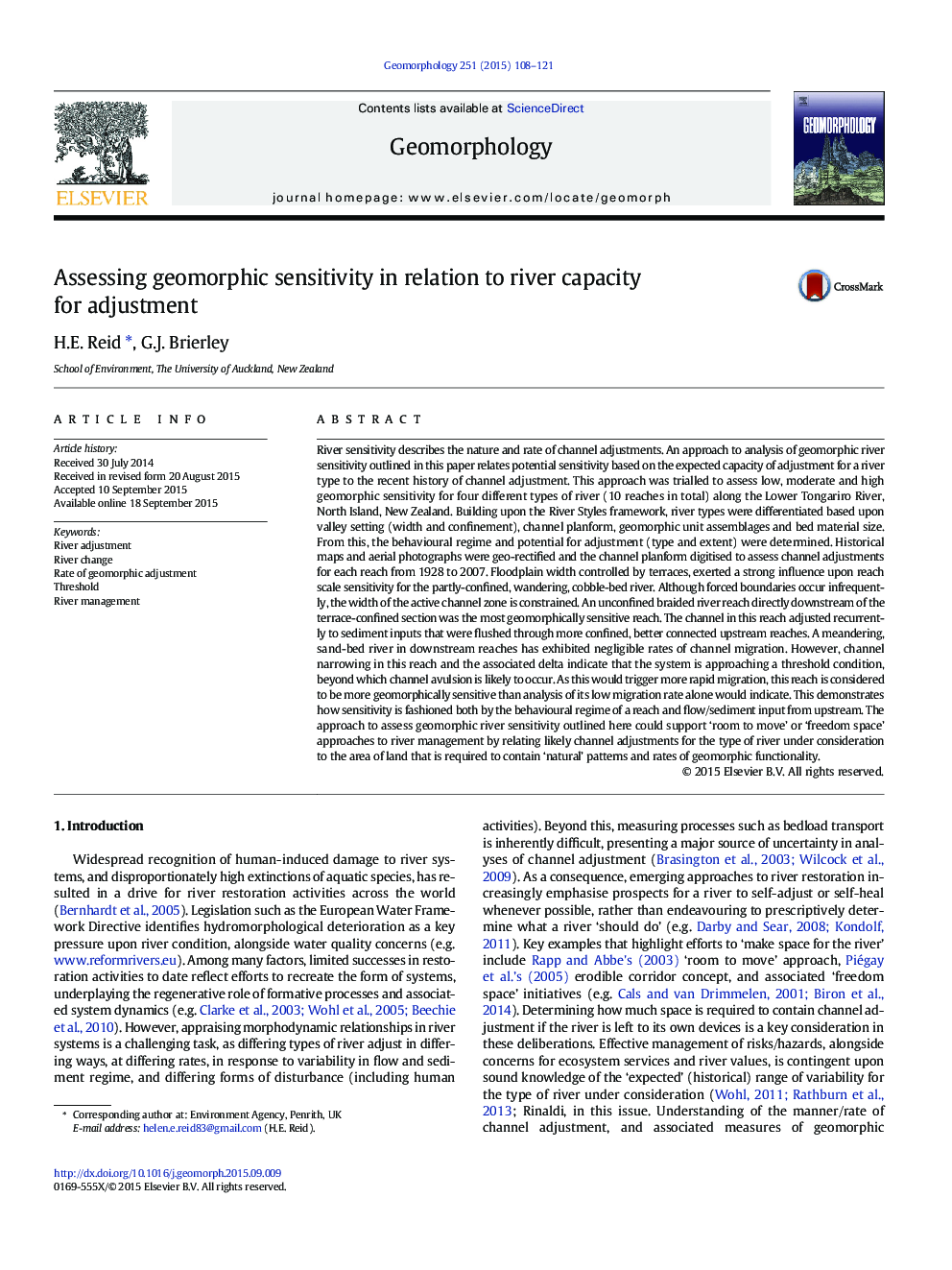| کد مقاله | کد نشریه | سال انتشار | مقاله انگلیسی | نسخه تمام متن |
|---|---|---|---|---|
| 4684146 | 1635398 | 2015 | 14 صفحه PDF | دانلود رایگان |
• A framework to assess geomorphic river sensitivity is presented and trialled on the Tongariro River, New Zealand.
• The framework relates the potential sensitivity of a reach based on the expected capacity of adjustment for that type of river to the recent history of channel adjustment.
• The standard deviation of average channel width provides a useful measure of geomorphic river sensitivity.
• Downstream changes in boundary conditions and local-scale controls (floodplain width) induce notable changes in sensitivity.
River sensitivity describes the nature and rate of channel adjustments. An approach to analysis of geomorphic river sensitivity outlined in this paper relates potential sensitivity based on the expected capacity of adjustment for a river type to the recent history of channel adjustment. This approach was trialled to assess low, moderate and high geomorphic sensitivity for four different types of river (10 reaches in total) along the Lower Tongariro River, North Island, New Zealand. Building upon the River Styles framework, river types were differentiated based upon valley setting (width and confinement), channel planform, geomorphic unit assemblages and bed material size. From this, the behavioural regime and potential for adjustment (type and extent) were determined. Historical maps and aerial photographs were geo-rectified and the channel planform digitised to assess channel adjustments for each reach from 1928 to 2007. Floodplain width controlled by terraces, exerted a strong influence upon reach scale sensitivity for the partly-confined, wandering, cobble-bed river. Although forced boundaries occur infrequently, the width of the active channel zone is constrained. An unconfined braided river reach directly downstream of the terrace-confined section was the most geomorphically sensitive reach. The channel in this reach adjusted recurrently to sediment inputs that were flushed through more confined, better connected upstream reaches. A meandering, sand-bed river in downstream reaches has exhibited negligible rates of channel migration. However, channel narrowing in this reach and the associated delta indicate that the system is approaching a threshold condition, beyond which channel avulsion is likely to occur. As this would trigger more rapid migration, this reach is considered to be more geomorphically sensitive than analysis of its low migration rate alone would indicate. This demonstrates how sensitivity is fashioned both by the behavioural regime of a reach and flow/sediment input from upstream. The approach to assess geomorphic river sensitivity outlined here could support ‘room to move’ or ‘freedom space’ approaches to river management by relating likely channel adjustments for the type of river under consideration to the area of land that is required to contain ‘natural’ patterns and rates of geomorphic functionality.
Journal: Geomorphology - Volume 251, 15 December 2015, Pages 108–121
